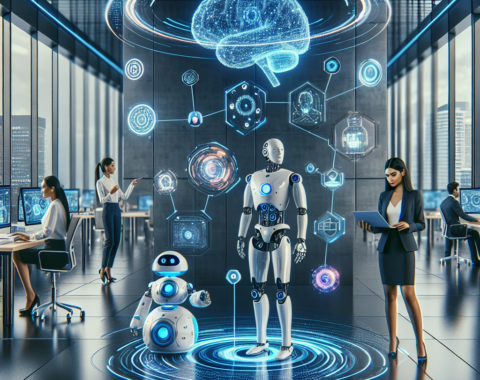
Top Cybersecurity Trends for 2025: AI’s Dominance Revealed
As we approach 2025, the landscape of cybersecurity continues to evolve rapidly, with Artificial Intelligence (AI) playing a pivotal role. According to Gartner’s latest report on cybersecurity trends, AI is not just a supplementary tool but a fundamental component of future strategies. This comprehensive analysis unpacks these trends, offering insights into how businesses can navigate this complex environment.
Understanding the Top Cybersecurity Trends for 2025
The increasing sophistication of cyber threats has necessitated an evolution in defense mechanisms. By 2025, several trends are expected to reshape cybersecurity, with AI at the forefront.
1. AI-Powered Cyber Defense
AI’s integration into cybersecurity systems is both a necessity and a revolution. This trend highlights AI’s ability to analyze vast datasets in real-time, allowing for the rapid identification of anomalies that could signify cyber threats. Organizations are leveraging AI to design intelligent systems that autonomously adapt and respond to new threats, thereby enhancing security measures.
- Real-time threat detection
- Enhanced pattern recognition
- Proactive threat mitigation
2. Zero Trust Architecture
As cyber threats become more sophisticated, adopting a Zero Trust model is becoming crucial. Organizations must move beyond the traditional perimeter-based security and ensure every access request is verified, regardless of its origin. This model minimizes trust levels and necessitates continuous validation, greatly reducing the potential for breach.
- Least-privilege access
- Strict user verification protocols
- Continuous network monitoring
3. Enhanced Cloud Security
The migration to cloud computing is undeniable, and with this shift comes the necessity for enhanced cloud security measures. Gartner emphasizes that AI will be instrumental in automating and managing cloud security processes, including threat detection, assessment, and response in the cloud landscape.
- Automated security updates
- Intelligent cloud monitoring
- Dynamic risk assessment
4. Cybersecurity Mesh Architecture (CSMA)
Gartner predicts that CSMA will be an integral part of cybersecurity by 2025. This architectural approach allows for more integrated security postures through its modular design, making it easier for organizations to incorporate disparate security products for holistic protection.
- Integrated security services
- Flexible security frameworks
- Interoperability between security tools
5. Privacy-Enhancing Computation Techniques
As data privacy laws become stricter, employing privacy-enhancing computation techniques is critical. This involves using AI algorithms that ensure data confidentiality during processing, thereby empowering organizations to comply with privacy regulations while mitigating risks associated with data breaches.
- Secure multi-party computation
- Privacy-preserving machine learning
- Data encryption and masking
6. Cybersecurity Skills Shortage
The demand for cybersecurity professionals is increasing, yet there is a significant skills gap in the industry. To address this issue, organizations are turning to AI-driven tools that can automate routine tasks, allowing human experts to focus on more complex challenges. This trend is vital as businesses strengthen their defenses against increasingly complex cyber threats.
- AI-based training solutions
- Automation of repetitive tasks
- Strategic workforce planning
Preparing for the Future of Cybersecurity
As we draw closer to 2025, preparing for these emerging trends is essential for organizations aiming to build resilient cybersecurity frameworks. AI technology will play a crucial role in amplifying security capabilities and addressing the challenges posed by modern cyber threats.
Integrating AI into Current Systems
Organizations should begin integrating AI technologies into their existing cybersecurity infrastructure. This includes employing AI-driven solutions for threat intelligence, identity management, and risk assessment, ensuring systems are prepared to tackle future challenges effectively.
- Invest in AI research and development
- Leverage AI-based threat intelligence platforms
- Adopt AI for identity and access management (IAM)
Fostering a Security-First Culture
A broader cybersecurity strategy must incorporate a shift in organizational culture toward one that prioritizes security at all levels. Fostering a security-first culture involves training employees and promoting awareness about cyber risks to reinforce security protocols across the board.
- Regular cybersecurity training sessions
- Promoting employee vigilance and awareness
- Encouraging proactive security practices
Conclusion
The evolution of cybersecurity into 2025 is a testament to the critical role of AI in defending against modern cyber threats. By embracing these trends and preparing strategically, organizations can position themselves to not only withstand emerging challenges but also excel in a rapidly changing digital landscape.
AI’s dominance in cybersecurity is undeniable, and its ongoing integration will redefine how we secure our digital environments. The key lies in remaining adaptable, proactive, and informed about the ever-evolving cybersecurity landscape.




